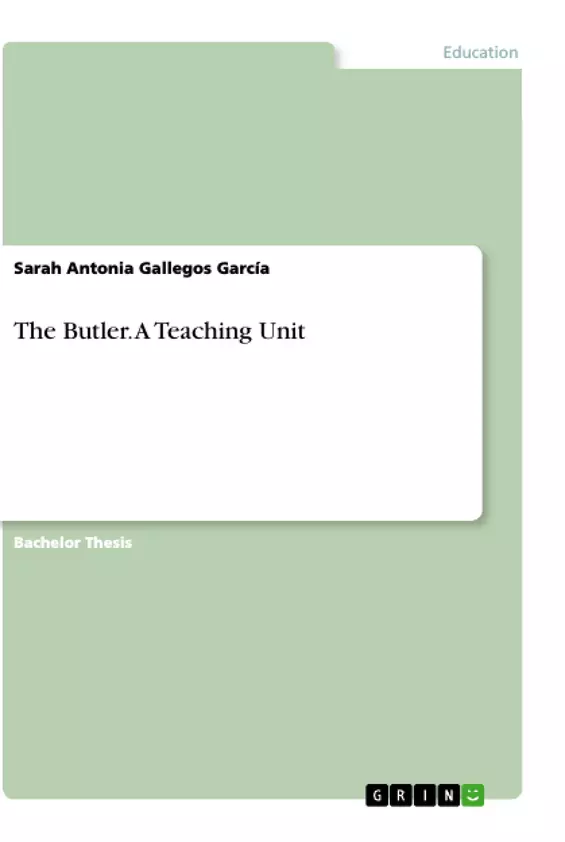The overall topic of this teaching unit is the Civil Rights Movement of America, which will be taught in the 12th grade of an advanced course.
The students will have acquired a deepened intercultural understanding before leaving school and encountering the real world, possibly visiting foreign countries after their abitur. The topic will be used to teach the cultural studies of America and expand their intercultural competences with this historical and political background knowledge. The teaching unit comprises eight lessons; two of them are discussed in more detail regarding the subject matter, didactic and methodological analysis. The used material and teacher's expectations for two of the lessons can be found in the appendix.
In a globalized world characterized by international private and professional relationships, above all in Europe, acquiring communicative and intercultural competences, crucially in the lingua franca English, is ever more important. These competences are also anchored in the scholastic standard for the subject of English and implicate the necessity to teach students skills, which enable them to communicate in a sensitive and differentiated way. They will then be prepared to take on international jobs, to be prevented from falling foul of misunderstandings, to question their own behavior, to be tolerant and to treat others respectfully.
One good method of teaching these competences in an English lesson is the use of films. The widespread assumption that films only function as entertainment has to be revised, because films offer an important insight into the culture of English speaking countries and contribute a lot to communicative competences such as writing and listening. In comparison to other media, films contain an interaction with visual and acoustic features which opens new ways for interpretation and creative methods.
Furthermore, films offer the possibility to practice intercultural understanding, introduce dialects and native-speaker tempo. The earlier students are confronted with such a tempo, the better they will tolerate the reality that not every word needs to be understood. Also, the fact that nowadays students are surrounded by new media every day justifies the usage of films. Their film reception starts already in childhood through watching TV; hence they should be taught how to analyze what they see so that they do not become mere passive consumers, but critical ones.
Inhaltsverzeichnis (Table of Contents)
- 1. Introduction
- 2. The Third Lesson
- 2.1. Analysis of the Subject Matter: Slavery
- 2.1.1. Views on Slavery by John C. Calhoun Slavery a Positive Good and William Lloyd Garrison No Compromise with Slavery
- 2.2.1. The Three Discrimination-Scenes of The Butler
- 2.3. Didactic Analysis
- 2.4. Methodological Analysis
- 2.5. Lesson Plan
- 2.1. Analysis of the Subject Matter: Slavery
- 3. The Fifth Lesson
- 3.1. Analysis of the Subject Matter
- 3.1.1. Martin Luther King and his Speech I have a Dream
- 3.2. Didactic Analysis
- 3.3. Methodological Analysis
- 3.4. Lesson Plan
- 3.1. Analysis of the Subject Matter
- 4. Appendix
- 4.1 The Teacher's Expectations
- 4.2.1 On the Third Lesson
- 4.2.2 On the Fifth Lesson
- 5. Teaching Unit Plan
- 6. Bibliography
- 7. Zusammenfassung
Zielsetzung und Themenschwerpunkte (Objectives and Key Themes)
This bachelor thesis aims to analyze and develop a teaching unit based on the film "The Butler" (2013) for 12th grade students. The teaching unit focuses on the Civil Rights Movement in the United States, exploring its historical, political, and cultural dimensions.- Intercultural Competence
- The History of Slavery in America
- The Civil Rights Movement
- Film Analysis as a Teaching Tool
- Development of Critical Thinking Skills
Zusammenfassung der Kapitel (Chapter Summaries)
The introduction emphasizes the importance of teaching intercultural competence and the role of films as a valuable tool in language learning. The thesis focuses on the Civil Rights Movement of America, using the film "The Butler" to explore the topic in depth. Chapter 2 delves into the third lesson of the teaching unit, which focuses on slavery and discrimination. It analyzes the historical context of slavery in America, contrasting the views of pro-slavery activists like John C. Calhoun with those of abolitionists like William Lloyd Garrison. The chapter then examines three key scenes from the film "The Butler" that depict discrimination, including the field, restaurant, and bus scenes. Chapter 3 explores the fifth lesson, which examines the role of Martin Luther King Jr. and his "I Have a Dream" speech. It provides a brief overview of King's life and legacy, placing his speech within the context of the Civil Rights Movement.Schlüsselwörter (Keywords)
The primary keywords and focus topics of this thesis are: intercultural competence, film analysis, Civil Rights Movement, slavery, discrimination, Martin Luther King Jr., "The Butler" (2013), teaching unit development.- Quote paper
- Sarah Antonia Gallegos García (Author), 2015, The Butler. A Teaching Unit, Munich, GRIN Verlag, https://www.grin.com/document/499439



